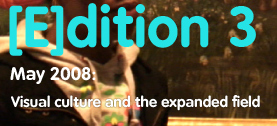Image/Sound/Text:
- Intro
- 'I am': self - identity among participants
- First Encounters
- Joining up the dots
- Domestic space and objects of significance
Domestic space and objects of significance
My work on the families ethnography has so far involved a visit to Scunthorpe with Jacqueline Ryan, one of the pilot group of participants, to meet her family. She has a British father and Chinese-Malay mother. Jacqueline's parents own and run an Oriental grocer’s in town, which means life is lived around the business, and the majority of their days are spent at the shop. I stayed at their home for two days and managed to document three significant visual ethnographic moments: Jacqueline giving me a tour of the domestic space and objects of significance to her within it, an Life Story interview with her mother, May Ling, conducted in the shop, and May Ling talking through the objects of significance for her in the house, which were all in the front room. Having a (relatively) prolonged period there allowed me to live the experience as well as video it, and significantly my presence (and by extension the camera's presence) facilitated the divulging of information that the family did not know about each other.
As the family business was the central point of daily life, and most of the Ryan’s activities were based around it, I also had to conduct my fieldwork around this reality and fit in to the patterns of the family’s lived experience. As such interviews were conducted ‘on the job’, or at home, opportunistically. I could not plan when I was going to video. Rather I had to be ready for whenever an appropriate or relevant opportunity presented itself, and to use each opportunity to inform another. In this next clip, May Ling showed me some objects that have meaning for her in the home, which came out of a conversation we had had in the shop about the symbolism and display of the decorative objects she sells. This conversation followed an interview I had with Jacqueline about the arrangement and content of their domestic space. As such, by the time it was filmed, May Ling had some understanding of who this ‘person with a video camera’ was, and what it was I was interested in, to the extent that she was showing me, rather than me asking to see.
Although this is a visual moment, and we can see that aesthetics play a part in May Ling’s determination of what makes an object significant, she also touches upon the importance of the invisible to her - both in terms of the way in which she lives her religious beliefs, and the way in which these objects have an efficacy that can be altered by human intervention. This reifies Pink’s notion that ethnographic knowledge does not necessarily take the form of observable facts. Rather, it is “better understood as originating from fieldwork experiences. Knowledge is produced in conversation and negotiation between informants and researcher, rather than existing as an objective reality that may be recorded and taken home in a note book, camera film or tape” (2007:98).
Reference: Pink, S. (2007). Doing Visual Ethnography (2nd Edition). London: Sage.






